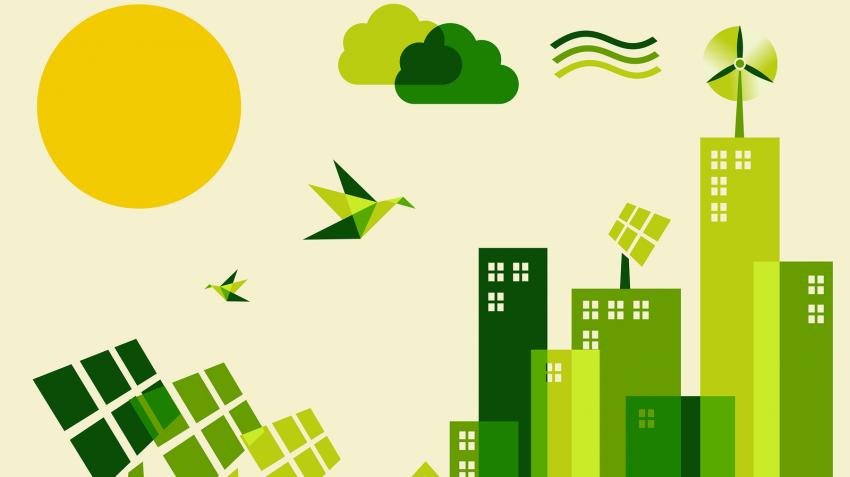This article from the Asian Development Bank is the first in the UNAI START series that looks at Sustainable Development Goal #11:Sustainable Cities and Communities. Schools and departments of urbanization at UNAI member institutions were asked to submit articles highlighting research and work relating to the design and construction of more resilient and sustainable cities for the 21st century, and to showcase the importance of addressing urbanization in achieving the 2030 Development Agenda. Please note that the articles are for discussion, and do not necessarily reflect the views of the United Nations.
Imagine for a second that you have the ability to look into the future and see the city you live in. What would it look like? Would it be green, peaceful and safe or would it be full of crime, darkness and pollution? Maybe it is a city with skyscrapers and flying cars, where technology and the environment live in harmony?
Everyone has their own vision of the future. The United Nations (UN) and other development organisations believe in a bright future for our cities. The UN describes its vision for cities in Sustainable Development Goal (SDG) 11: sustainable, safe, resilient and inclusive cities. The Asian Development Bank shares this vision and constantly works to ensure that countries in Asia and the Pacific can achieve their vision by providing the financing and technical support necessary to realize it.
For the first time in history we have more people living in urban areas than in rural areas. In Asia and the Pacific, around 754 million people live in urban areas and this number expected to grow in the coming years. According to ADB, in 2010 approximately 43 per cent of the population of Asia and the Pacific lived in urban areas. This number is expected to grow to an estimated 65 per cent by 2050, a growth rate that presents many challenges for urban planners and institutions like ADB. Since the 1960s, ADB has invested 15 billion US dollars into more than 200 urban development projects in Asia and the Pacific, and this number is estimated to increase significantly due to rapid and continued urbanization.
As urbanization increases, the liveability of many Asian cities is decreasing due to air pollution, traffic congestion, poor public transportation, and shortage of public open spaces. The main urban challenge confronting ADB is how to create liveable cities while still maintaining growth. ADB has had success implementing sector-specific approaches, but it needs to find new and innovative ways to address the complexity of urbanisation facing our communities.
To address the challenges of continued urbanization, ADB is piloting many new approaches to improve liveability in Asian cities. One such approach is known as the Future Cities Program which explores ways that ADB can strengthen relationships with cities and broaden its assistance.
The Future Cities Program aims to use a 'One ADB' approach to harmonize investments. and integrate different stakeholders and sectors into a unified approach to build sustainable and inclusive communities because as American urbanist Jane Jacobs once wrote, 'Cities have the capability of providing something for everybody, only because, and only when, they are created by everybody'.
The Future Cities Program will be implemented in five different cities across Asia and the Pacific: Mandalay, Bandung, Ulan Bataar, Suva and Tbilisi. The program will be customized to each government's need and will include long-term engagement with the selected cities to provide them with the support they need, including planning activities to mitigate urban challenges. The Program aims to provide cities with sustainable and affordable infrastructure, improve quality and efficiency of the selected cities and contribute to productivity and stability in the region. The key element of Future Cities Program is the Finance ++ approach. Finance ++ integrates loans and grants from ADB in combination with technical assistance. By implementing this approach, ADB provides not only financial support but also technical capacity building and knowledge gained through research and years of experience with urban development. The Finance ++ approach allows ADB to address a wide variety of urban issues that will ultimately make cities more liveable.
Asia and the Pacific is home to 45 per cent of the world's young people and is projected to have the largest population of young people of any region in the world until 2080 when it will be surpassed by Africa. Therefore, ADB and the Future Cities Program have highlighted youth as a key stakeholder in building cities of the future. Young people will support the Future Cities Program through data collection, urban planning, finance management, transportation, gender equality and small and medium enterprise development.
Future Cities will collaborate with AIESEC and Urban Youth Academy to find a diverse group of young people who are committed to working in the development field. Not only will these young people gain international and cross cultural experience, they also play an active role in building the cities of tomorrow.
About the Author
Julia Safarova is a research designer at the Youth For Asia team as part of ADB's partnership with AIESEC.

